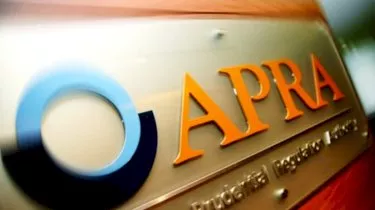Borrow
APRA eases residential mortgage lending rules
Big changes are underway for your mortgage. The banking regulator is looking at measures that experts are tipping will make access to credit easier.
APRA eases residential mortgage lending rules
Big changes are underway for your mortgage. The banking regulator is looking at measures that experts are tipping will make access to credit easier.

In a letter to authorised deposit-taking institutions (ADIs)- a bank or credit union- APRA is removing the guideline of using a minimum interest rate of at least 7 per cent.
Currently, if an investor is unable to pay back the loan at a mortgage rate of 7 per cent, they are not approved for the loan.
Under this new proposal, ADIs would be permitted to review and set their own minimum interest rate floor for use in serviceability assessments.
APRA Chair Wayne Bryes believes it the changes will provide greater flexibility to set their own serviceability floors.

“APRA introduced this guidance as part of a suite of measures designed to reinforce sound residential lending standards at a time of heightened risk,” he said.
“Although many of those risk factors remain – high house prices, low interest rates, high household debt, and subdued income growth – two more recent developments have led us to review the appropriateness of the interest rate floor,” said Mr Byres.
“With interest rates at record lows, and likely to remain at historically low levels for some time, the gap between the 7 per cent floor and actual rates paid has become quite wide in some cases – possibly unnecessarily so,” he said.
In its letter, ARPA has proposed a buffer of 2.5 per cent to ADIs meaning an investor would have 10 25 basis point rate rises before finding themselves in financial distress.
The guidelines are not new, with APRA first introducing them back in 2014 as part of its efforts to reinforce sound residential lending standards.
APRA is having a four-week consultation program that will finish on 18 June, ahead of APRA releasing its final version of the updated APG 223 shortly afterwards.
About the author

About the author


Loans
Navigating the Australian student loan landscape: Options for financing your education
Securing financing for post-secondary education is a significant step for many Australians, offering a pathway to advancing career prospects and achieving personal growth. Read more

Loans
Secured vs. unsecured personal loans: Which is right for you?
When considering a personal loan in Australia, one of the first decisions you'll face is whether to opt for a secured or an unsecured loan. Each type has distinct advantages and drawbacks, and the ...Read more

Loans
Weighing up interest-only home loans: What Australian borrowers need to know
Interest-only home loans have become a topic of considerable interest among Australian borrowers, offering a unique approach to home financing. This type of loan allows borrowers to pay only the ...Read more

Loans
Bridging loans demystified: Navigating your next property purchase in Australia
Navigating the property market can be daunting, especially when timing issues arise between selling your current home and purchasing a new one. Bridging loans offers a solution, providing the ...Read more

Loans
Ultimate guide to green loans: Financing sustainable home projects in Australia
As Australians become increasingly conscious of their environmental impact, many are turning to sustainable home improvements to reduce their carbon footprint and enhance energy efficiencyRead more

Loans
CBA launches digital home loan with 10-minute application
According to the bank, Unloan will provide a single low-cost interest rate to borrowers with an application time of as little as ten minutes. Read more

Loans
Are central banks weighing the economic pain of rate hikes?
The hype around interest rate hikes usually centres around the urgent and fundamental need to alleviate the consequences of inflation – but does this monetary policy do more harm than good? Read more

Loans
As rates begin to rise, how much more will new borrowers pay?
Mortgage holders could be asked to pay over $1,000 more per month due to rising interest rates. Read more

Loans
Navigating the Australian student loan landscape: Options for financing your education
Securing financing for post-secondary education is a significant step for many Australians, offering a pathway to advancing career prospects and achieving personal growth. Read more

Loans
Secured vs. unsecured personal loans: Which is right for you?
When considering a personal loan in Australia, one of the first decisions you'll face is whether to opt for a secured or an unsecured loan. Each type has distinct advantages and drawbacks, and the ...Read more

Loans
Weighing up interest-only home loans: What Australian borrowers need to know
Interest-only home loans have become a topic of considerable interest among Australian borrowers, offering a unique approach to home financing. This type of loan allows borrowers to pay only the ...Read more

Loans
Bridging loans demystified: Navigating your next property purchase in Australia
Navigating the property market can be daunting, especially when timing issues arise between selling your current home and purchasing a new one. Bridging loans offers a solution, providing the ...Read more

Loans
Ultimate guide to green loans: Financing sustainable home projects in Australia
As Australians become increasingly conscious of their environmental impact, many are turning to sustainable home improvements to reduce their carbon footprint and enhance energy efficiencyRead more

Loans
CBA launches digital home loan with 10-minute application
According to the bank, Unloan will provide a single low-cost interest rate to borrowers with an application time of as little as ten minutes. Read more

Loans
Are central banks weighing the economic pain of rate hikes?
The hype around interest rate hikes usually centres around the urgent and fundamental need to alleviate the consequences of inflation – but does this monetary policy do more harm than good? Read more

Loans
As rates begin to rise, how much more will new borrowers pay?
Mortgage holders could be asked to pay over $1,000 more per month due to rising interest rates. Read more








